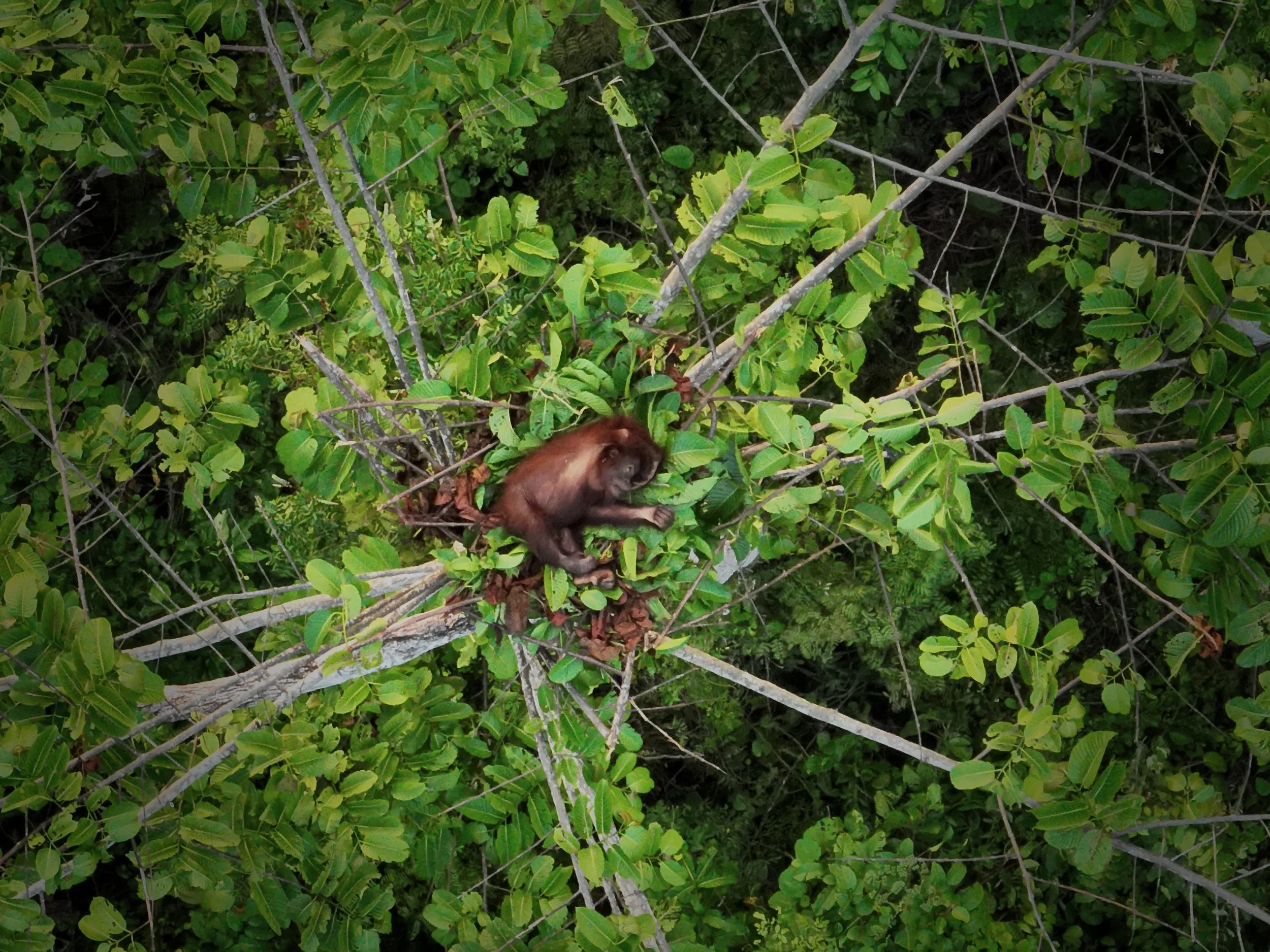
Our Work
Biodiversity Research & Protection
-
Hutan operates one of the longest-running wild orangutan research sites in the world. At our permanent study site, we have been conducting ground-breaking research on the socio-ecology of three generations of orangutans. Due to the orangutans solitary and cryptic nature, orangutan research is highly specialised and takes a lot of patience and effort. We also conduct phenological studies based on orangutan diets, and use our findings to guide reforestation efforts.
-
Monitoring wildlife population trends allows us to assess the overall health and biodiversity of specific habitats and ecosystems. We carry out population surveys both in our long-term research site, and across the Kinabatangan landscape, collecting data about diverse species including birds, frogs, bats, small and large mammals from areas such as dry forests, semi-inundated forests, riparian zones, limestone habitats, and in abandoned sections of oil palm plantations.
-
In the mosaic Kinabatangan landscape, the root cause of escalating human-wildlife conflicts, especially with elephants and orangutans, is the impossibility for large terrestrial mammals to move freely and safely between isolated patches of protected forest. Hutan’s trained Honorary Wildlife Wardens patrol the landscape to guide wildlife away from villages and agricultural areas, and to deter illegal activities such as poaching and logging.
In parallel, Hutan is committed to long-term solutions by expanding habitat size and restoring ecological connectivity, through the creation of permanent, safe wildlife passageways, especially along the Kinabatangan River and its tributaries.
-
In 2018, our teams initiated a long-term biodiversity monitoring at the 110-acre Genting Wildlife Corridor, a section of the larger Keruak Wildlife Corridor that is covered with abandoned mature oil palms. The Hutan Reforestation team has been working to restore this corridor by planting native trees in between the palms. To assess the impact of these efforts, the Wildlife Survey and Protection unit conducts biodiversity monitoring through various methods, including small mammal trapping, frog and bird surveys, bioacoustics, and camera trapping.
-
Hutan has started assessing and monitoring ecosystem health across various land-use types and reforested areas by assessing biomass as a proxy for carbon storage, and soil health. The findings inform restoration strategies and support climate change mitigation by identifying which land uses best support ecological recovery and sustainability.
-
To address species decline in the Kinabatangan, Hutan supports targeted recovery efforts. Since 2010, our Pangi Swiftlet Population Recovery Project has boosted the swiftlet population by over 1,400%, with ongoing monitoring and daily patrols to prevent illegal harvesting.
Also, Hutan has been building and erecting artificial nest boxes for large hornbill species to compensate for the absence of large emergent trees that are the natural breeding sites for these cavity-breeder species. More than 40 nests were erected in the forests of Kinabatangan and other sites resulting in the production of several chicks belonging to rhinoceros hornbills and other species of hornbills.
-
Hutan is integrating new technologies with traditional survey methods to better understand population dynamics in the Kinabatangan. By combining thermal drone technology, helicopter and ground-based surveys, we aim to obtain a more accurate picture of orangutan distribution and enhance the effectiveness of monitoring and conservation efforts. Since 2021, Hutan is also exploring Bioacoustic Monitoring to document bats and other species in various types of forest environment.
Hutan continues to expand its long-standing research and monitoring programmes to advance understanding of biodiversity dynamics and resilience in the Kinabatangan mosaic landscape. Our research provides critical insights into species ecology and adaptation strategies, offering a robust scientific foundation for effective evidence-based conservation planning and management.
Restoring & Reconnecting Habitats
Habitat fragmentation poses a major threat to wildlife in the Kinabatangan, as it leads to problems like isolated animal populations and increased conflicts with humans. To improve the resilience of the landscape, Hutan is reconnecting forest patches along the Kinabatangan River. Our approach combines reforestation efforts and a strategic land procurement to secure patches of natural forest as protected areas, creating safe corridors for wildlife to move freely across the entire landscape.
-
The reforestation project started in 2008, and we have planted over 246,000 trees across 11 reforestation sites, including protected areas, riparian zones, and wildlife corridors on private land. The reforestation team also carries out regular maintenance of planted tree saplings to ensure their survival.
Our biodiversity monitoring shows that areas such as the Genting Wildlife Corridor (a 110 acre section of privately-owned land in the larger Keruak Wildlife corridor) is already attracting a variety of forest specialist animal species, several of them being listed as threatened on the IUCN Red List.
-
Connectivity is not only an issue on land. Historic commercial logging severely disrupted the forest canopy over the Kinabatangan River’s tributaries, which has created impassable barriers for non-swimming wildlife such as orangutans, further fragmenting their populations. Hutan has been addressing this issue since 2005, installing 12 hanging bridges across key tributaries to facilitate safe passage for orangutans and other wildlife species.
-
Hutan is committed to supporting and collaborating with government agencies and the private sector in assessing wildlife populations across Sabah. The survey results from our wildlife and biodiversity monitoring are used to inform wildlife management plans, map potential wildlife corridors, and develop human-wildlife conflict mitigation strategies.
-
Hutan collaborates with partners across sectors on research and implementation projects, such as the TRAILS initiative with CIRAD, Melangking Oil Palm Plantation, and University Putra Malaysia, which explores integrating oil palm cultivation with native forest species through agroforestry. Additionally, we support partner efforts across Kinabatangan, such as promoting the Best Management Practices for Coexistence with Orangutans in Mixed-Forest Oil Palm Landscapes, published by OrangJUGA in March 2023.
-
Hutan uses all the knowledge resulting from our field activities to conduct awareness events for the general public and local communities. These outreach programmes, conducted jointly with other NGOs and government agencies, aim to build a community that appreciates and values local biodiversity while encouraging people to take conservation action and to minimize their environmental footprint.
-
Professional development of Hutan’s staff is a core value of our organisation. We organize and facilitate targeted training sessions covering a wide range of topics essential to our research and conservation work for our staff. In turn, the various Hutan Units are regularly organizing capacity building and training events that benefit members for local communities, state agencies or the private industries.

